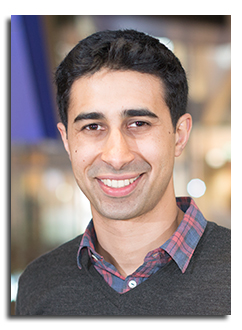
Abstract
(Murad's paper has been published in Nature Physics
http://www.nature.com/nphys/journal/vaop/ncurrent/full/nphys3909.html)
Multiple exciton generation (MEG), the generation of two or more excitons from the absorption of one photon, can be achieved in bulk semiconductors, inorganic quantum dots, and organic systems. If exploited in photovoltaic technology MEG can augment current generation. Indeed, by including MEG in detailed balance calculations the limiting efficiency of solar cells is increased from 33.7% for a single threshold device to 45.9% under 1 Sun.
The multiple exciton generation process in organic systems is known as singlet fission, wherein a singlet exciton splits into two triplet excitons with equal or lower energy. While several molecular systems have shown fission yields of 200%, the intricacies of this process are still not completely understood. In this talk I will first outline the theoretical potential of singlet fission in an organic/inorganic hybrid solar cell, and then discuss the effects of organic crystal morphology on the efficacy of fission. Finally, using magnetic resonance techniques, I will show that the singlet fission process generates a transient multiexciton species which has quintet character. This represents the first observation of a quintet state in a closed shell organic molecule.
Click here to see all available video seminars.
Click here to go to the SPREE HOMEPAGE.
Brief Bio
Murad completed his PhD thesis on the thermodynamics of third generation photovoltaic devices and the spectroscopy of solar cell absorbers under the supervision of Prof Timothy Schmidt at the University of Sydney in 2012. Murad began an ARENA Postdoctoral Fellowship in 2013 to work with Prof Gavin Conibeer at UNSW on singlet fission in organic materials. Murad will leave UNSW in September 2016 to take up a Marie Skłodowska-Curie Postdoctoral Fellowship at the Cavendish Laboratory, University of Cambridge.
